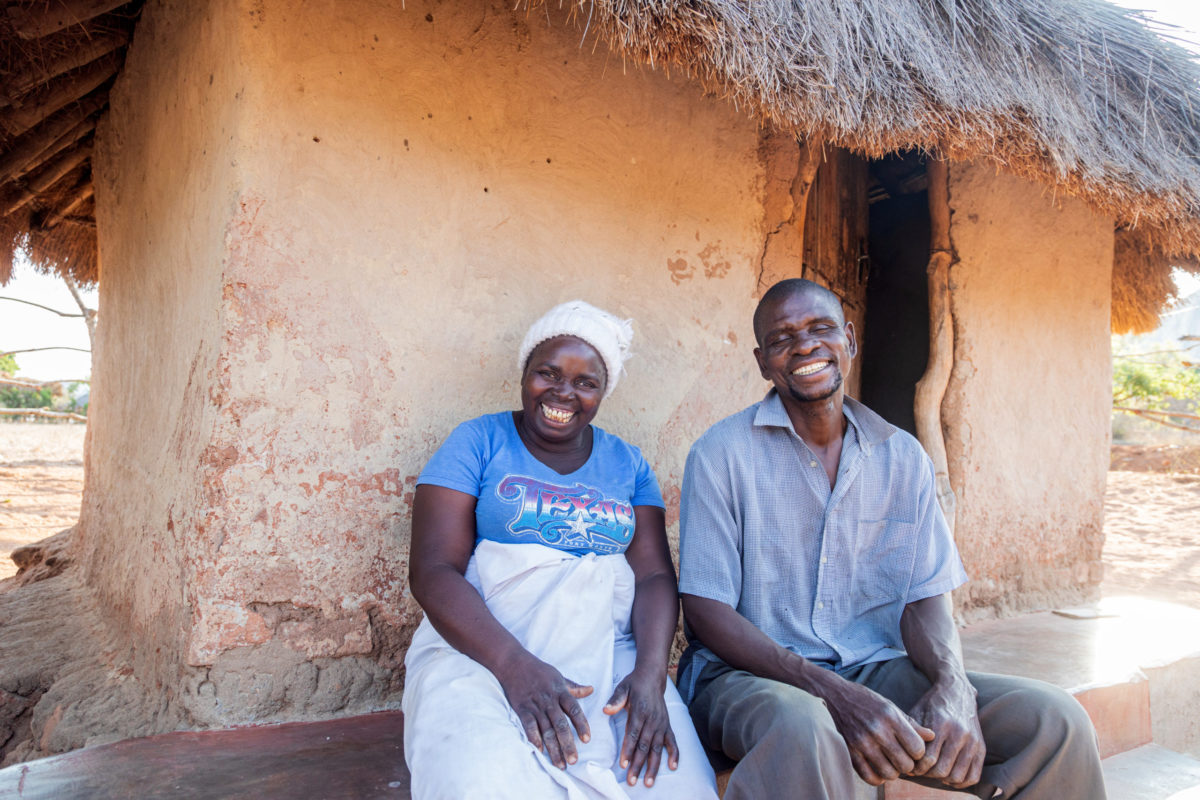‘Planting the Rain’: An innovative approach towards building sustainable futures
In April 2021, Takunda began engaging with communities through a visioning process guiding them on developing action plans that any organization can use. Wendumba village in Ward 11, Mutare rural, was a part of the pilot phase of the community visioning process that led to the development of a community action plan (CAP) for Cluster 2.
Written By: CHARMAINE CHITATE
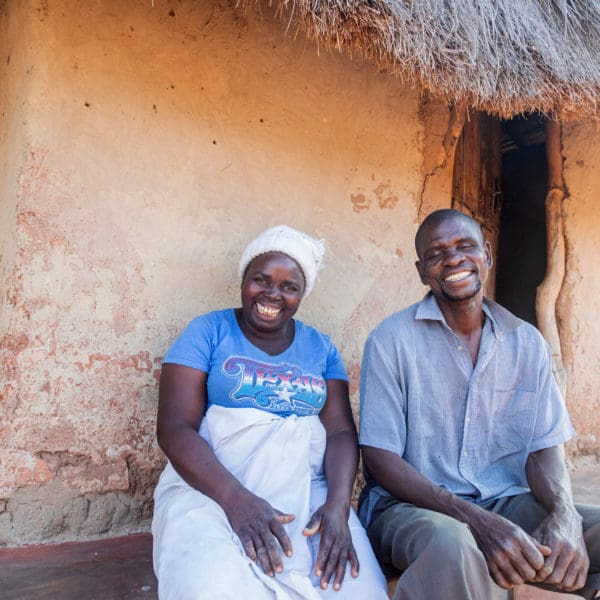
OCTOBER 07, 2021: CEPHAS DZITIRO (41) and his wife WINNET MASIYAH (45) opened their homestead to resilience design teams from the USAID-funded Amalima Loko and Takunda projects in collaboration with Muonde Trust. © Charmaine Chitate/ CARE
During their needs-based ranking, Ward 11 prioritized access to water and the rehabilitation of existing water sources in their community with 124 votes. The Resilience Design training supported by USAID and facilitated by SCALE comes hot on the heels of these findings.
Once classified as ‘reserve land’ with little agricultural potential, the area receives an annual rainfall of 107mm- half the amount needed to yield maize.
Prone to drought, Councillor for Ward 11, MAZVITA ZINDOMO (63) shared the following history through the CAP, “In 1992, 2008 we didn’t experience any rainfall. In 2002, 2019 we were affected by Cyclones Eline and Idai. In 2020 we lost livestock to January disease and crop to the fall armyworm.” These disasters are compounded by the ongoing COVID-19 induced environment leading to non-cultivation on arid land.
The need for building a resilient household able to withstand these shocks and stressors is ever-present and teams from Amalima Loko, Muonde Trust, and Takunda met to collaborate and reimagine what food security can be for these families.
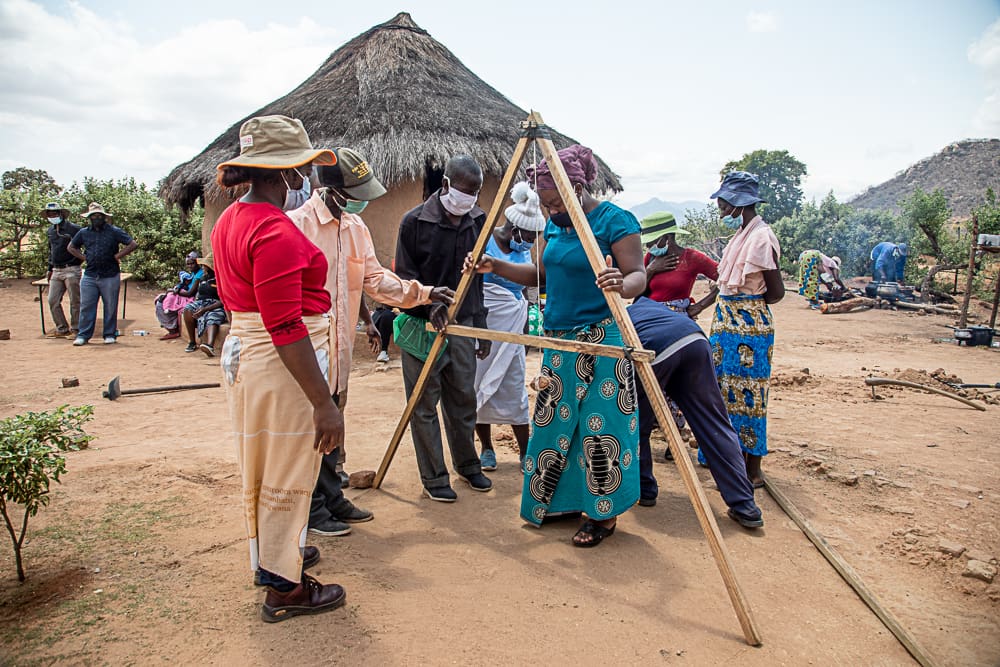
OCTOBER 07, 2021: POLITE MASARA, Disaster Risk Reduction Officer, uses a homemade A-frame to map out the flow of water at Cephas and Winnet’s homestead as BARBRA SIBANDA, Zaka District Supervisor, and community members look on. © Charmaine Chitate/ CARE
“Resilience Design is an opportunity for us to integrate the various components of our project and remove the ‘silo thinking’ around our programming,” said RUNYARARO MUNONDO, Resilience Manager at USAID Takunda RFSA. She adds, “We selected Cephas and Winnet’s homestead as one of four Perma garden demonstration sites under the Takunda program. Our integrated team was challenged to identify, in consultation with the homeowners, ways to manage rainfall water and increase productivity around the household.
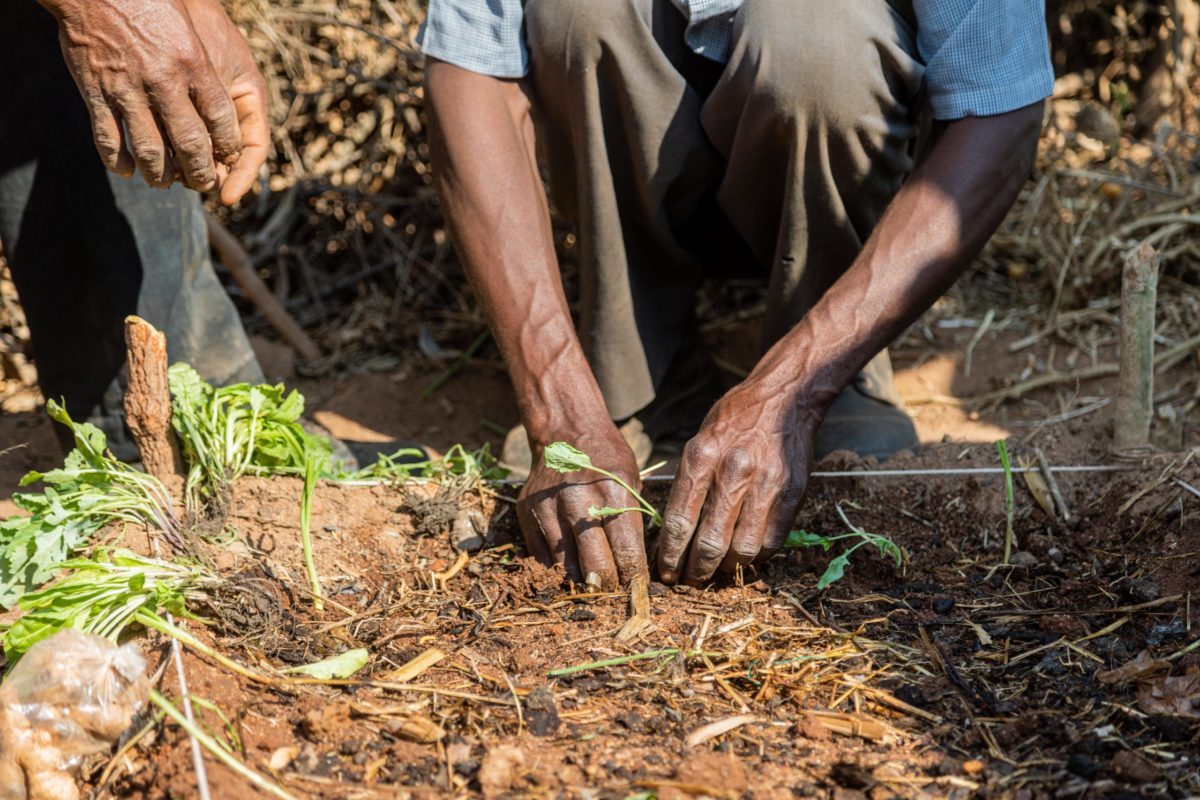
OCTOBER 07, 2021: CEPHAS DZITIRO (41) begins to plant into his newly double dug bed in Wendumba Village, Ward 11. © Charmaine Chitate/ CARE
Attributed to Mr. Phiri from Zvishavane, resilience design encourages increasing soil health and fertility, biointensive planting, and water management around the household and in the field using contours, bioswales, and demi-lunes. FORTUNE TAFIRENYIKA, Disaster Risk Reduction, and Resilience Specialist at Takunda shared, “Thirty centimeters of topsoil is removed from the site of a potential garden bed and set aside. A second 30cm layer of soil is loosened and mixed with mulch, manure, and leaves. This will help increase soil fertility and the mulch will allow water to sink into it preserving moisture in the soil. This only needs to be done every five to seven years.”
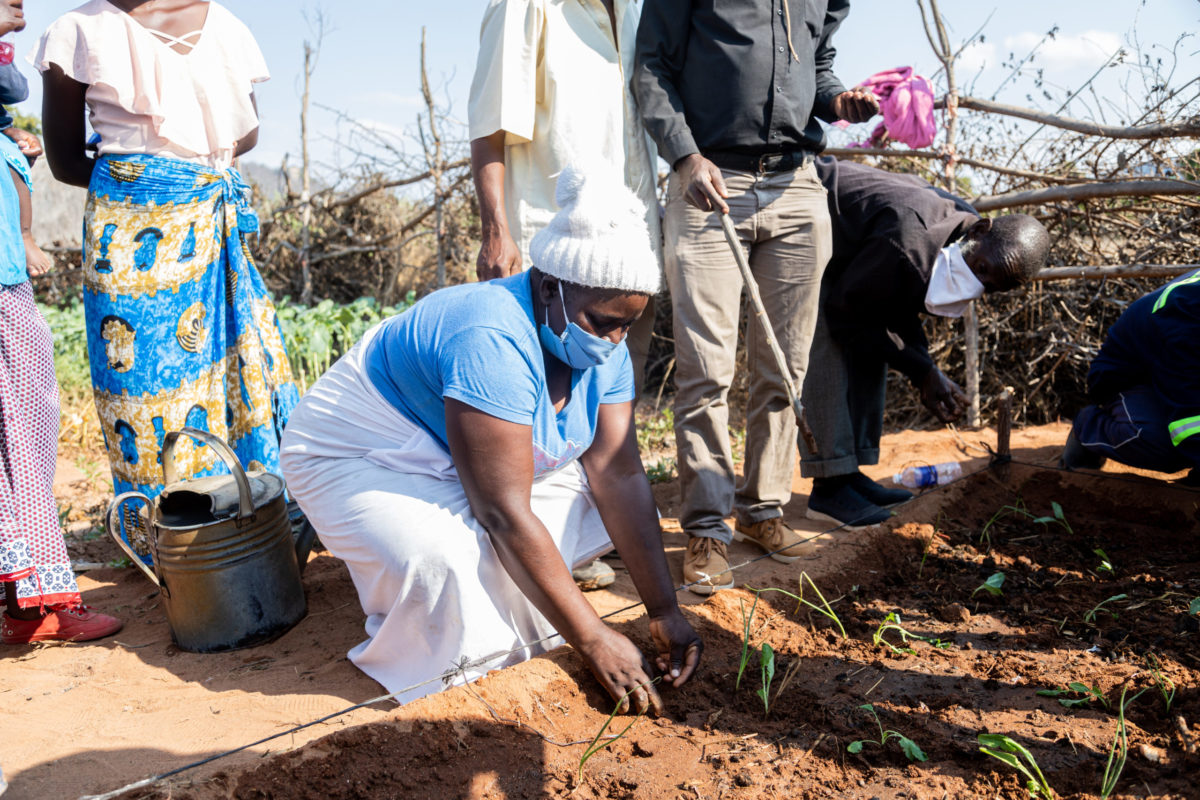
OCTOBER 07, 2021: WINNET MASIYAH (45) crouches to plant ginger into one of the beds double-dug beds in her perma garden. © Charmaine Chitate/ CARE
PATISIWE ZABA, Resilience Lead at Amalima Loko, had this to say in a reflection session, “I liked how we worked together as a single team. The community couldn’t tell we were from different projects, and it would have taken our respective human resources departments to tell us apart.”
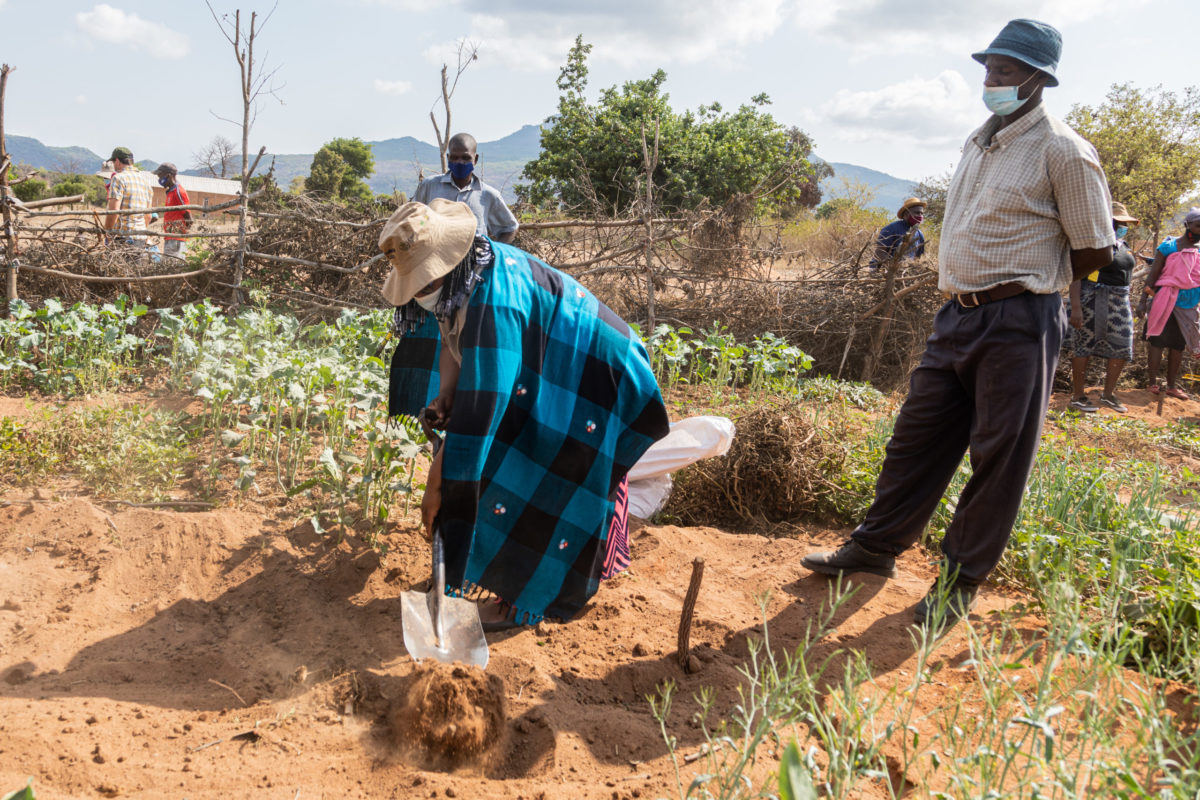
OCTOBER 07, 2021: PATISIWE ZABA, Resilience Lead at Amalima Loko, shovels soil off a garden bed. © Charmaine Chitate/ CARE
Building on experiences from the implementation process at Cephas’ homestead, Takunda staff began to roll out and scale up across four districts, surpassing their target by delivering on a total of 22 demonstration sites.
WATCH VIDEO
USAID Takunda’s Resilience Design
Uploaded by USAID Takunda on 2023-08-13.

